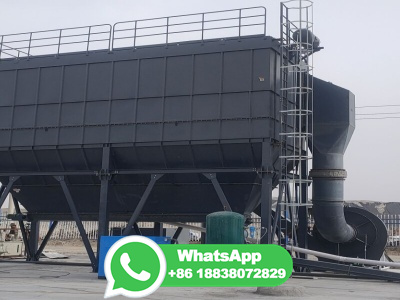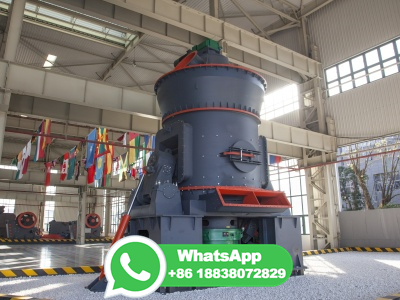
Coking coal, or metallurgical coal, has been produced in the United States for nearly 200 years. Coking coal is primarily used in the production of coke for use in the steel industry, and for other uses (for example, foundries, blacksmithing, heating buildings, and brewing). Currently, coking coal is produced in Alabama, Arkansas, Pennsylvania, ia, and West ia.
WhatsApp: +86 18037808511
To make steel in a blast furnace, coal must first be turned into coke. Coke has a dual role in the steelmaking process. First, it provides the heat needed to melt the ore, and second, when it is burnt, it has the effect of 'stealing' the oxygen from the iron ore, leaving only the pure iron behind. In the coking plant, coal is heated in the absence of oxygen to 1250c.
WhatsApp: +86 18037808511
The coal blend quality and process control of coke making technologies are an important lever to produce quality coke with optimal cost. Apart from impacting cost, this improves the CO 2 footprint. Heat recovery stampcharged coke making technology was introduced in Tata Steel in 2008.
WhatsApp: +86 18037808511
The goal is to replace "met" coal, also referred to as coking coal, with electricity from renewable energy and hydrogen and to have a fossilfree steelmaking process by 2035. It wants to ...
WhatsApp: +86 18037808511
A rotary coke oven developed by the Wise Coal and Coke Company reportedly produces a smallsize coke or char suitable for a chemical reducing agent in some processes, such as electric furnace production of steel and in phosphorus manufacture. ... In the FischerTropsch process, coal is gasified completely to make synthesis gas, and the gas is ...
WhatsApp: +86 18037808511
The 'Hearth' process of coke making, using lump coal, was continued to be used in many areas during the first half of the 19th century. This process was similar to that of charcoal burning but using a heap of coals covered with coke dust instead of a heap of prepared wood, covered with twigs, leaves and earth. ...
WhatsApp: +86 18037808511
Coke is an important raw material in the steel industry, and its quality directly influences the smelting of iron and steel. To improve coal quality and reduce coal blending costs, we need to predict the coke quality and optimize the coal blending scheme. In this paper, we propose a modeling and optimization method based on the characteristics of the coal blending and coking process.
WhatsApp: +86 18037808511
Turning coal into coke, a raw material used in steelmaking, is a complicated and dangerous process, as evidenced by the explosion Wednesday that injured 20 people at the country's largest coke plant. But those familiar with the industry say it can be done safely.
WhatsApp: +86 18037808511
To make coke, you'll need to go mining. Refined coal can be extracted from underground, in veins of two potential resources. When mining, look out for bituminous coal or lignite. Either resource must be mined and then refined in a smelter to produce 3 coke. Due to the smelting process requiring one source of fuel, you will gain a net of 2 coke.
WhatsApp: +86 18037808511
Coal Tar is obtained as a byproduct in the process of making coke. Its color is similar to coke but it is a highly viscous liquid accompanied by an unpleasant smell. It is used to make synthetic dyes, drugs, perfumes, plastic, paints, etc. Naphthalene balls are also obtained from it.
WhatsApp: +86 18037808511
The blended coal mass is heated for 12 to 20 hours for metallurgical coke. Thermal energy from the walls of the coke chamber heats the coal mass by conduction from the sides to the middle of the coke chamber. During the coking process, the charge is in direct contact with the heated wall surfaces and develops into an aggregate "plastic zone".
WhatsApp: +86 18037808511
lowering of the coke:iron ratio used in the blast furnace (e. g., increased use of pulverized coal injection). There were 18 coke plants operating in the U. S. in 2007. Process Description19, 16, 194 Most coke is produced in the U. S. using the "byproduct" process, and three plants used a "nonrecovery" process in 2007. The ...
WhatsApp: +86 18037808511
The fundamental aspect of the coal blending theory of low value coals to produce good quality of metallurgical coke in nonrecovery coke making process was investigated in this study by using the composite coking potential technique. The implementation of the technique has yielded use of up to 25% pulverized coal injection, 20% raw petroleum ...
WhatsApp: +86 18037808511
However, the practical application of biomass has major restrictions [(Fick et al., 2013)] and there are still significant technical limitations to using biomass to completely replace fossil fuels in the BFBOF process: Price: At present, coke (coal after the coking process) is roughly 200/ton, compared with the cost of biocharcoal at 295 ...
WhatsApp: +86 18037808511
A coke oven is a device used to produce coke, a product that is derived from coal. The mixing and heating of bituminous coal at temperatures ranging from around 1832° to 3632°F (1000° to 2,000°C) within the airless oven yields the coke byproduct. This device is a crucial part of the cokemaking process. Coke is a solid remainder of ...
WhatsApp: +86 18037808511
In this video I show how to make coke fuel from coal. I use the coke to melt copper in my is a link to the video of my first attempt at melting ...
WhatsApp: +86 18037808511
We would like to show you a description here but the site won't allow us.
WhatsApp: +86 18037808511
The second step in coke production is to process the raw material, coal, into a consistency appropriate for coke oven achieve this consistency, coal is pulverized in a crusher and, if necessary, mixed with water and oil to control the density of the pulverized coal mixture. A basic diagram of the most common coke making process ...
WhatsApp: +86 18037808511
Coke from coal is grey, hard, and porous and has a heating value of million Btu per ton. Coke (petroleum): A residue high in carbon content and low in hydrogen that is the final product of thermal decomposition in the condensation process in cracking. This product is reported as marketable coke or catalyst coke.
WhatsApp: +86 18037808511
The grade of a coal for coke making is determined by its content of impurities, such as extraneous moisture, ash, sulfur, and sometimes phosphorus, which lower its value. ... depending on the composition of the coal. The last stage in the process is marked by high resistance to shear (high viscosity), and finally the mass sets to form coke ...
WhatsApp: +86 18037808511
The coke reactivity index and coke strength after reaction are critical parameters for the efficient operation of a blast furnace. Therefore, maintaining desired qualities of the produced coke as per coal blend chemistry and coke oven battery parameters is essential. However, the coke reactivity index (CRI) and coke strength after reaction (CSR) vary from laboratory to laboratory even though ...
WhatsApp: +86 18037808511
Coal is a combustible black or brownishblack sedimentary rock, formed as rock strata called coal is mostly carbon with variable amounts of other elements, chiefly hydrogen, sulfur, oxygen, and nitrogen. Coal is a type of fossil fuel, formed when dead plant matter decays into peat and is converted into coal by the heat and pressure of deep burial over millions of years.
WhatsApp: +86 18037808511
Purified coal, or "coke," is heated and melted with iron oxide and limestone, then injected with oxygen to reduce the carbon content of the mixture and to remove impurities. Almost all other ...
WhatsApp: +86 18037808511
The usual practice in the manufacture of coke is to apply external heat to the oven containing the coke and maintaining the necessary temperature for a long time, so that the gases are driven from the coal, leaving the carbon in the form of coke. This process is usually a long one, requiring twentyfour hours or more for its accomplishment.
WhatsApp: +86 18037808511
Coal carbonization is a process that yields metallurgical coke for use in ironmaking blast furnaces and other metalsmelting processes. Carbonization entails heating the coal to temperatures as high as 1300 °C in the absence of oxygen to distill out tars and light oils. A gaseous byproduct, referred to as cokeoven gas, together
WhatsApp: +86 18037808511
Chemicals from Coking Metallurgical Coal. Most of the chemicals derived from coal come from byproducts produced during the coking process. Coal is used to make coke to make steel. Coke gas (also called foul gas) contains coke tars, ammonia, and light oils. Tars are recovered and used to make tar derivatives. Ammonia is recovered as an aqueous ...
WhatsApp: +86 18037808511